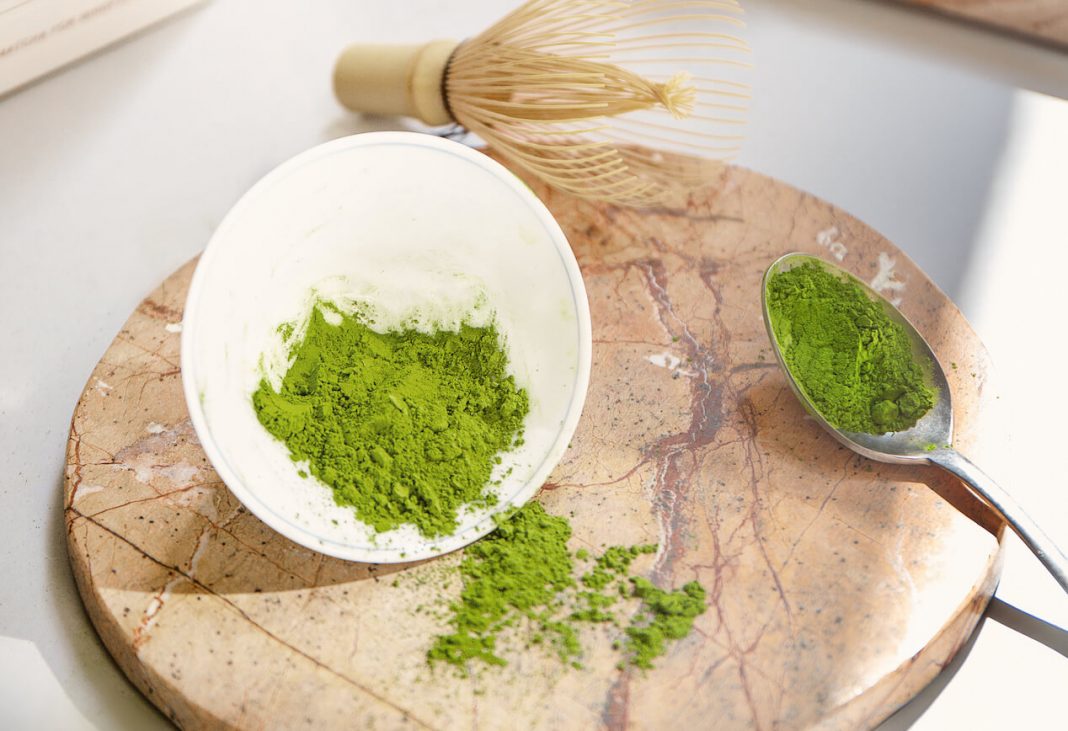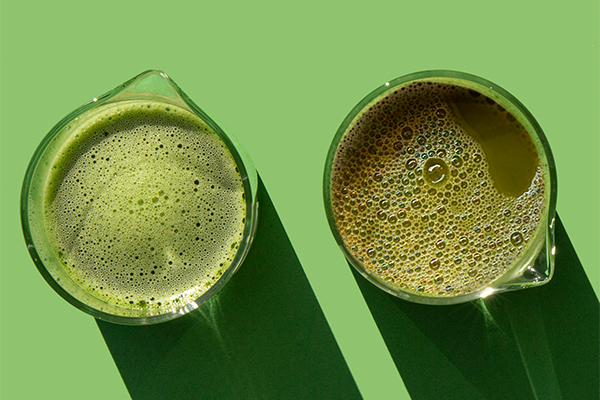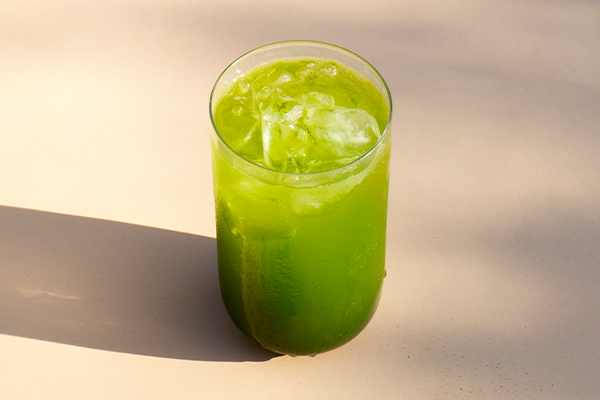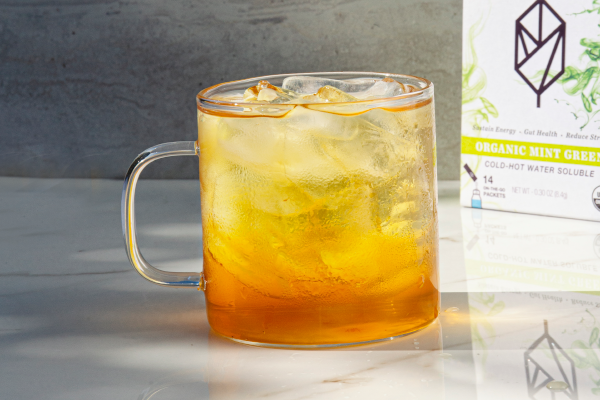Matcha seems to be having a moment. Beyond the lattes available at your local cafe, matcha is popping up in baked goods and Instagrammable smoothies, touted for its health benefits and unique color. But what exactly makes a cup of matcha so special? Here’s a primer on the popular green tea powder.
What is Matcha Powder?
When you’re drinking matcha (or a matcha latte), you are consuming the entire green tea leaf — not just its infusion in hot water.
Tea plants destined for matcha are covered up for about three weeks prior to harvest to shield the leaves from direct sunlight. This shade allows chlorophyll to build up in the leaves, resulting in its deep green color. This also helps to create the rich umami flavor matcha is known for. Once picked, the leaves are steamed to stop oxidation and left out to dry.
Rather than steeping and then straining leaves from hot water, the dried leaves are ground up and then sifted to make a fine powder. (No tea bags here.)
That green tea powder is then mixed into hot water with a bamboo whisk (a “chasen”) to make a richer, thicker version of the green tea you know and love.
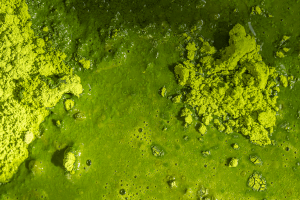
Health Benefits of Matcha Green Tea
Using the whole leaf changes the nutritional profile of green tea. One of the primary nutrients found in green tea leaves is the antioxidant epigallocatechin gallate (EGCG).
EGCG is a powerful catechin shown to have many protective health benefits; as part of an overall healthy diet, antioxidants help to keep cells healthy, and they also support heart health, brain health and help your body maintain healthy blood sugar and cholesterol levels. EGCG in particular may interfere with absorption of fat, which can help to maintain optimal cholesterol levels. [2]
Like green tea, matcha is also a rich source of amino acids, especially L-theanine, which promotes feelings of calmness, relaxation and mental clarity. [3] Good thing, too, because matcha also contains higher concentrations of caffeine — about 70 to 140 mg per cup versus 35mg in a cup of regular green tea. L-theanine’s mellowing effects help to counteract the state of high alert (and jitters) sometimes induced by caffeine. [4]
Safety Risks: What to Look For and How to Avoid Them
Guzzling down the entire tea leaf in the form of matcha powder means you’re also consuming any harmful substances lingering in the plant, including pesticides or heavy metals found in the soil like aluminum or lead. [5]
One way to limit exposure to these substances is to drink matcha in moderation. Chemicals and metals aside, matcha also contains higher concentrations of minerals like calcium, magnesium, potassium and phosphorus. Though our bodies need these nutrients, too much at one time can overload our kidneys, which are responsible for filtering these minerals from our blood.
Capping consumption at one cup per day is a good idea to ensure we don’t get too much of the good or bad stuff, maximizing matcha’s wellness benefits.
Another way to ensure your matcha is free of pesticides is to stick with organic matcha. Look for the USDA’s “certified organic” label, which signifies that the product was grown without the use of pesticides or synthetic fertilizers, and processed without the addition of artificial colors, flavors or preservatives.
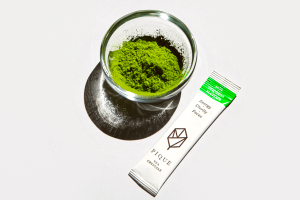
Choosing the Best Matcha
In addition to an organic label, signs of a good quality matcha powder include a fine texture and vibrant color. The green hue should be bright like the color of fresh grass. The powder should also be very fine and light, with no clumps or graininess.
Because you can’t necessarily crack open a tin and test these factors yourself in a store, it’s important to research brands before you buy. One thing to look for on the label is origin. Matcha powders from Japan tend to be of higher quality.
Another key signifier is the grade. Though matcha powder grades are not regulated and therefore may be inconsistent, the two categories you’re most likely to come across are culinary and ceremonial grades.
Culinary grade matcha is suitable for cooking and baking. It’ll provide the color and flavor, but some of that will be masked by the colors and flavors of other ingredients in your recipe.
Ceremonial grade, on the other hand, is meant to be drunk on its own, whisked into hot water the way that traditional matcha is prepared in Japanese tea ceremonies. Ceremonial grade matcha indicates higher quality and better drinking experience.
Here’s our recommendation for a high quality matcha:
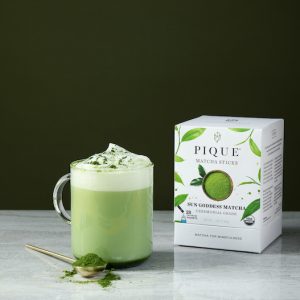
Pique Sun Goddess Matcha
The world’s purest matcha, crafted to the highest standards of the finest ceremonial grade matcha. Designed for mindfulness. A mug full of zen.
The Final Word
Matcha offers a richer and more flavorful alternative to green tea — and one packed with even more antioxidants.
First time drinking matcha green tea powder? Just be sure to select a high quality variety. Organic, ceremonial grade matcha (with no additives) will not disappoint.
Soon, you too may forgo that next cup of coffee and start calling yourself a matcha drinker!


